Diseases and pests of conifers
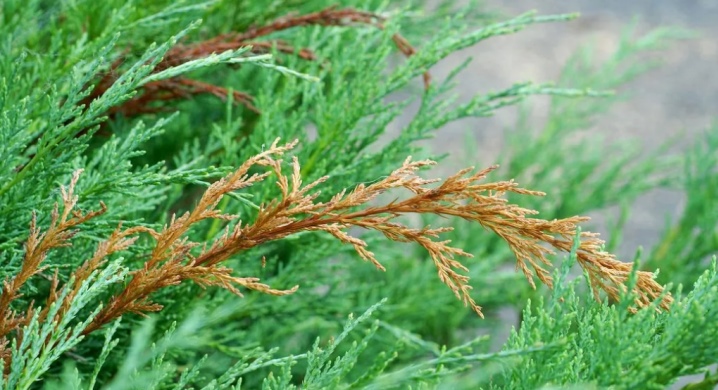
Evergreen pines, spruces, junipers and thuja are unpretentious and do not require special care. But it happens that the needles begin to turn yellow, and the branches are covered with a white bloom. Today, gardeners have learned how to successfully treat almost all diseases of coniferous crops, but for this it is necessary to accurately determine the cause of the plant disease. Let's get acquainted with the description of the main diseases of conifers.
Diseases and their treatment
Evergreen pathologies can have a variety of causes. At the same time, they often infect conifers even in the case when all the requirements of agricultural technology are observed, and the tree is surrounded by attention and care. Ailments can be associated with the negative effects of external factors, infection with viruses and fungi. Most diseases can be successfully treated, but sometimes there are those that cause the death of the tree.
In order to prevent a sad outcome, you need to learn to distinguish between healthy and diseased conifers. It is important to determine the signs of damage and their cause as quickly and accurately as possible. Young plants are the least resistant to unfavorable factors, since their immunity usually strengthens as they grow. Old trees almost never get sick.
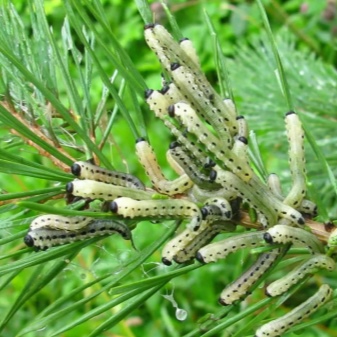
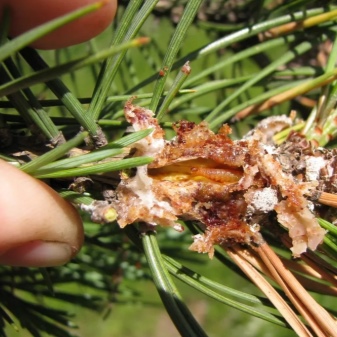
Non-infectious
A large category of pathologies of conifers is made up of non-infectious problems. They are the result of adverse environmental influences or may be associated with errors in agricultural technology. Most often, plant diseases are caused by:
- excess moisture resulting from spring floods, rising groundwater, prolonged rainfall or natural waterlogging of the soil;
- deficiency of micro- and macroelements;
- exposure to low temperatures in winter;
- return frosts in spring;
- burns with ultraviolet rays;
- general pollution and gas contamination of the air, the presence of toxic impurities in it.
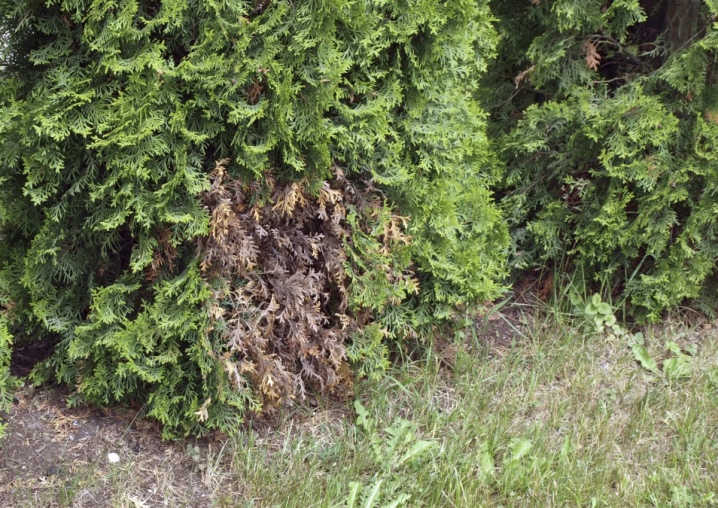
Non-infectious diseases of conifers lead to:
- underdevelopment of the root system of the plant;
- the use of low quality planting material;
- violation of the integrity of seedlings during transplantation.
In all these cases, in conifers, discoloration, yellowing and subsequent dying off of the needles begin. The bark freezes, begins to crack, and wounds appear on it. If you do not create effective protection for the plant at this moment, it will quickly die.
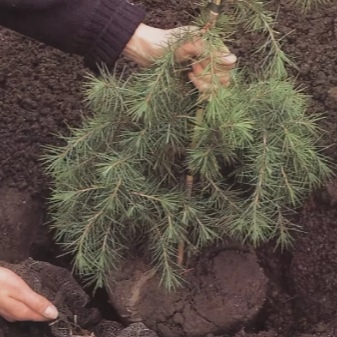
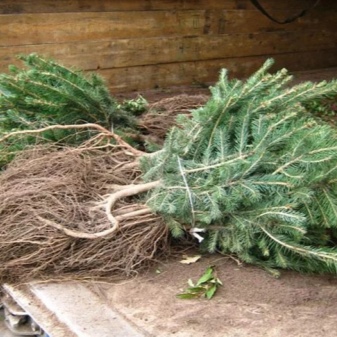
Infectious
Coniferous diseases are most often associated with fungal infection. The factors for the spread of such pathologies are a lack of lighting, humid warm weather and excessive precipitation. Symptoms of some diseases appear immediately, others make themselves felt much later, when the infection has covered most of the coniferous tree.
Fungal diseases on all tree crops are treated according to the same scheme. To prevent the defeat of conifers, they must be treated with Bordeaux liquid or copper sulfate. If the plant is still faced with a fungus, you should resort to purchased drugs. However, first you need to accurately determine the cause of the disease, this will help you choose the right treatment method.
In winter, conifers often encounter a shute infection. The causative agent of fungi develops at a temperature of about 0 degrees under the snow, the first symptoms appear in the spring and summer. With such an infection, small dots and a dark gray, almost black bloom are distinguishable on the needles.Gradually, the needles begin to darken and fall off.
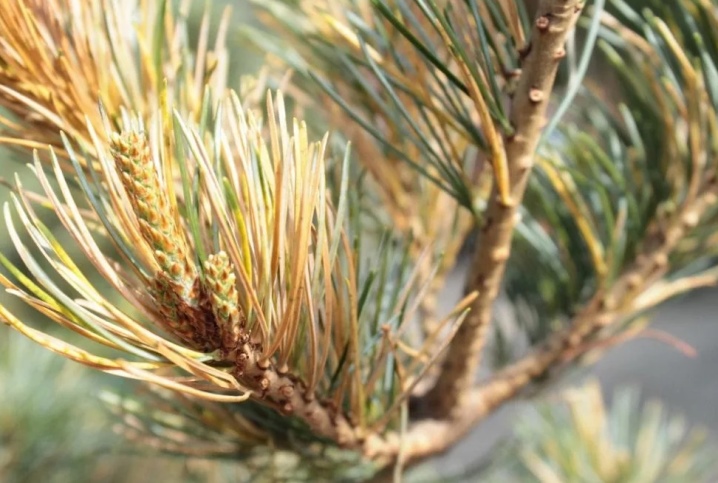
To cure the plant, you can use:
- sulfur-lime infusion - it is used three times;
- compositions "Abiga-Peak" or "HOM" - in this case, two treatments will be enough.
Rust can also affect coniferous plantings. For treatment, fungicidal agents are used, as well as preparations containing copper.
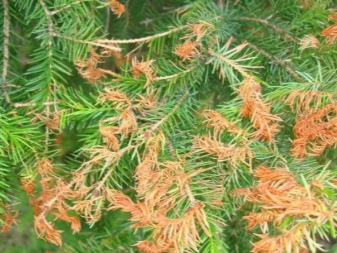
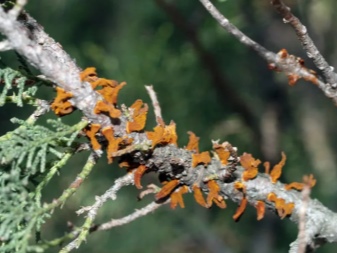
Conifers are affected by several types of rust.
- Spruce whirligig - on the back of the needles, dark-brown, dust-like formations are noticeable. Cones begin to open, and the shoots curl.
- Pine wither - mainly affects pines. It manifests itself in the deformation of the branches with further withering away of the apical sections. At an early stage of development, it captures the crown, but soon moves to the stem. In places of tissue breaks, you can see myceliums of a reddish-lemon color, the bark begins to swell and the wood is exposed. Pathology is not amenable to treatment.
- Pine rust - pathogenic fungi become the causative agent of infection. They manifest themselves in the spring, reproduce on needles and soon capture adult shoots. The trunk is covered with cracks, dark orange growths are noticeable in them.
- Juniper rust - usually passes to conifers from nearby fruit and berry plants (pears, apple trees, gooseberries and quince). In spring, pathogenic fungi multiply on their green parts, but with the onset of autumn they migrate to the conifers. During the winter, the defeat covers the entire plant; after the snow melts, you can see yellow needles covered with a jelly-like mass. The affected areas of the plant become denser - this leads to the death of the skeletal composition. The place of the root collar swells, the bark dries up quite quickly and falls off in pieces.
- Larch rust - this fungus attacks mainly larch and soon leads to yellowing of its crown.
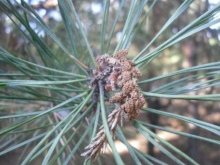
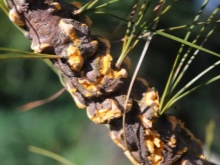

There are other common illnesses to be aware of.
- Fusarium. Infection begins in the ground near the roots and affects spruce, as well as larch, pine and fir in excessively damp weather. As the disease spreads, the central part of the crown begins to wither and crumble. To cure the ephedra, it is necessary to water and spray the trees with Fitosporin. As practice shows, these measures allow the trees to be completely revived.
- Alternaria Fungal spores infect thuja and juniper growing in shady areas. The disease can be identified by the dark gray spots that have spread over the needles. All affected branches and shoots must be removed. For the treatment of plants, an infusion of celandine or copper sulfate is used - the treatment must be carried out until the first frost.
- Bacteriosis It manifests itself in the pallor of the needles - it crumbles even from the slightest touch. The infection is not cured. To prevent the development of bacteriosis, it is necessary to periodically carry out plant prophylaxis with the help of "Fitosporin".
- Biotorella cancer. Fungal pathology affects wood. The disease manifests itself in a change in the shade of the young bark - it becomes brown, becomes covered with cracks and soon dies off. Elongated ulcers form on the trunks, over time they become covered with resinous growths. The needles turn yellow, crumble, the tree withers and slowly dies. Treatment will require a triple fungicidal treatment with a frequency of 10-14 days.
Treatment of conifers from fungus gives a result only if the volume of the lesion is small. In case of extensive damage, it is more expedient to destroy the plant. The soil should be thoroughly disinfected - this will preserve the health of neighboring plants.
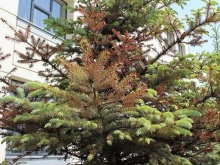
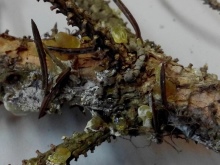

Pests and the fight against them
Conifers can be attacked by insect pests.
Cedar, pine, as well as larch, fir and spruce are often affected by the hermes, which is popularly called the pine tick. These pests multiply very quickly, and even single individuals in a short time develop to the state of a colony. You can identify the pest by the appearance of a whitish coating on the needles.
Adult hermes grow up to 2.5 mm. They are green, brown and gray, and the wings are transparent. The best effect in the fight against them is provided by the universal drug "Pinocid" against insect pests.
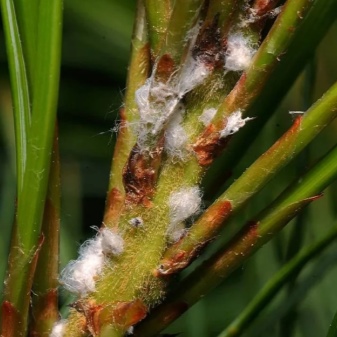
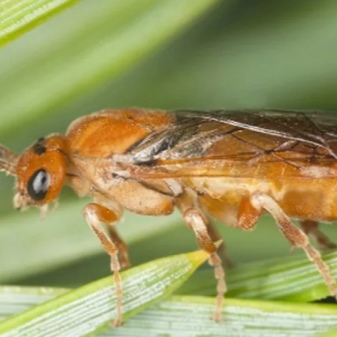
Bark beetles can only get on conifers from the forest. Therefore, if the site is located far from the forest, then the invasion of these pests should not be feared. However, residents of houses located next to evergreen plantings sometimes have to fight these beetles. Bark beetles lay their eggs under the bark, for this they gnaw tunnels in the wood. The larvae grow up to 1.5 cm and continue to tear apart more and more shelters. They need to be poisoned with the onset of the first spring heat, when adult beetles crawl out and lay their larvae. The greatest effect is given by modern poisonous insecticides.
Pine trees are often attacked by common or red sawflies. They are dangerous because they lay in the bark of conifers. Their larvae are light green in color, so they are practically indistinguishable in young needles. The pest feeds on plant juices. If you notice that the branches have begun to dry, you must immediately perform the treatment with one of the following preparations:
- "Spark Double Effect" - gives the best result;
- Iskra Zolotaya - works best on cedars;
- Senpai - a toxin of universal action.
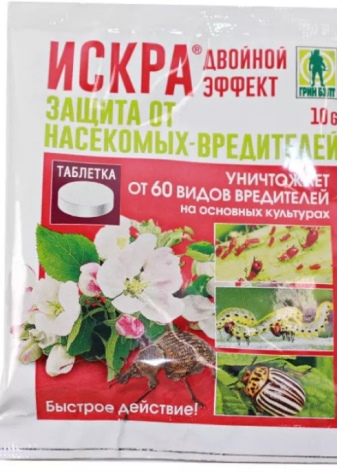
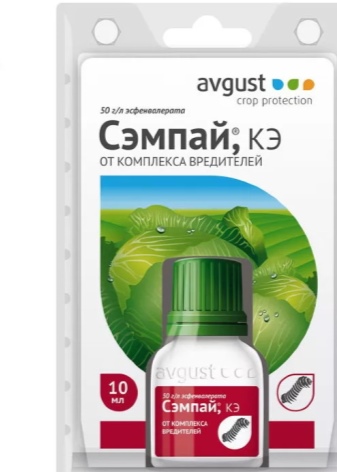
Juniper often becomes the subject of attack by green sawfly caterpillars. These are small caterpillars with a brownish head and contrasting stripes on the body. They spend winter in the depressions of the bark, under a dense layer of needles and in the nodes of branches. To remove the insect, it is necessary to process all parts of the ephedra with "Alatar"; additionally, soil should be shed. It is advisable to rake all the needles around the trunk and pour mulch instead.
False shields are often found on thujas and junipers. These insects are distinguished by a dense hard shell. Males are elongated, females more rounded. Larvae pose the greatest danger to plants, they are quickly distributed throughout the needles. Best of all against insects are acaricidal preparations "Fufanon" or "Iskra-M".
You can often find coniferous plants, the tops of which seem to be entangled with cobwebs. The reason for this is the attack of a spider mite, this insect is microscopic in size. Its peak is on hot rainy days. Against the tick, "Karbofos" and "Fufanon" have proven themselves well.
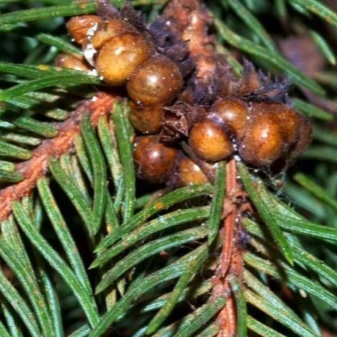
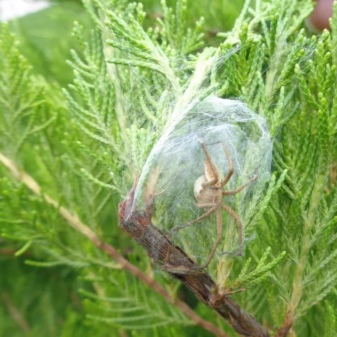
Pine silkworm causes great harm to plants. These are the larvae of variegated butterflies, the wingspan of which is 7-8 cm. The first caterpillars can be noticed in early spring; by July, clusters of pupae already appear on the conifers. Insects gnaw the bark on young pine shoots, which leads to the death of the tree. Preventive treatments with Bordeaux liquid in March help keep the conifers intact.
From time to time, pine bugs are found on the pines. These are small insects 3-5 mm in size. They have a reddish or yellow tint, therefore they almost merge with the bark of such a tree. In winter, bedbug larvae gather near the base of the trunk under fallen needles and other plant debris. As soon as the first warm days come, they immediately get out to the surface and begin to suck out the sap of coniferous trees.

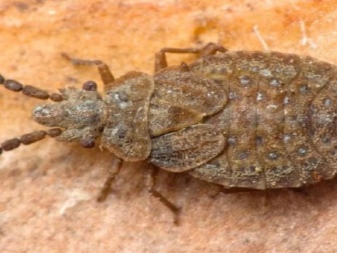
Prevention measures
It is always easier to prevent a disease than to cure it. This fully applies to evergreens. As practice shows, with good care, ephedra get sick much less often. Therefore, it is worth observing preventive measures.
- In order to avoid diseases of an infectious and non-infectious nature, you need to competently approach the choice of a place for planting conifers.The land must be drained, free from excess moisture, waterlogging and high groundwater. Conifers require good lighting, but at the same time they should not be placed under the scorching rays of the sun.
- It is advisable to plant conifers at a considerable distance from each other so that they do not shade each other. Otherwise, even in the most illuminated area, some trees will experience a lack of sunlight.
- Sanitary pruning of plants should be performed annually - cut down all diseased, broken and dry branches, and cover the cut points with garden pitch. Healthy, well-groomed trees are less susceptible to disease attacks and resist their adverse effects longer.
- It is possible to use insecticidal and fungicidal agents not only for the treatment of diseased plants, but also for prophylactic purposes. The fact is that most of the fungal infections and garden pests awaken in early spring, immediately after the snow melts. If at this moment the coniferous seedlings are sprayed with Bordeaux liquid, then all adverse effects on the conifers can be minimized. You can repeat the treatment in the summer.
- A comfortable breeding ground for bacteria and insect larvae is an uncleaned substrate with deposits of last year's needles and old leaves under the trunks of plants. To protect pines, spruces and other trees, the ground under them should be cleared, and all collected remains should be burned.
The pathologies of conifers include dozens of diseases, many of which lead to the weakening and death of the ephedra. However, with the observance of the rules of agricultural technology and careful monitoring of the condition of the plants, most of the ailments can be avoided or cured in the early stages.

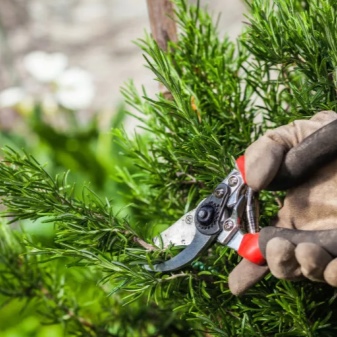













The comment was sent successfully.